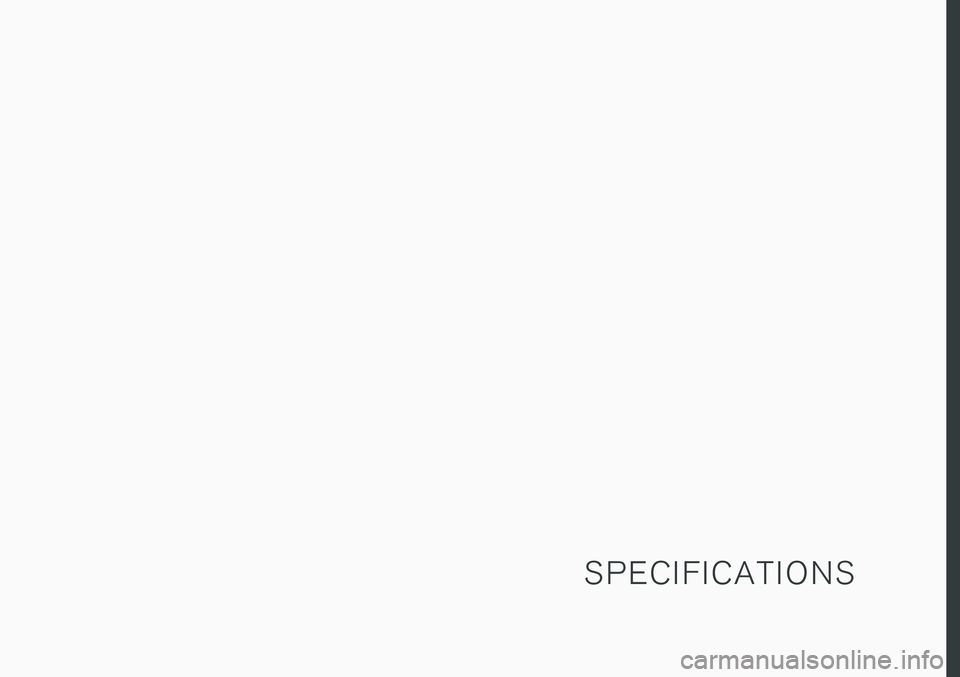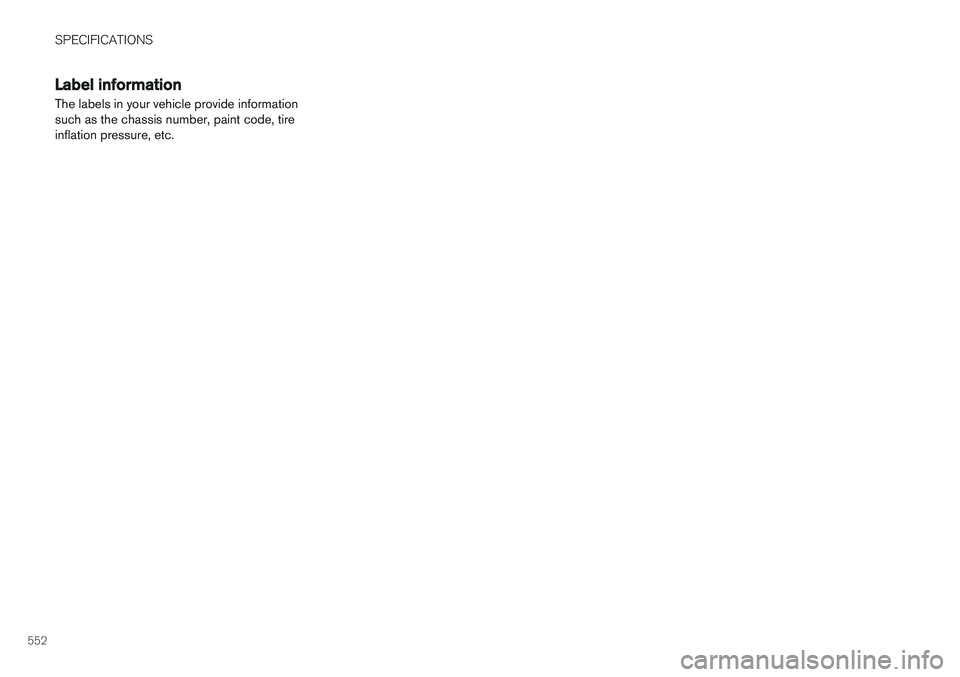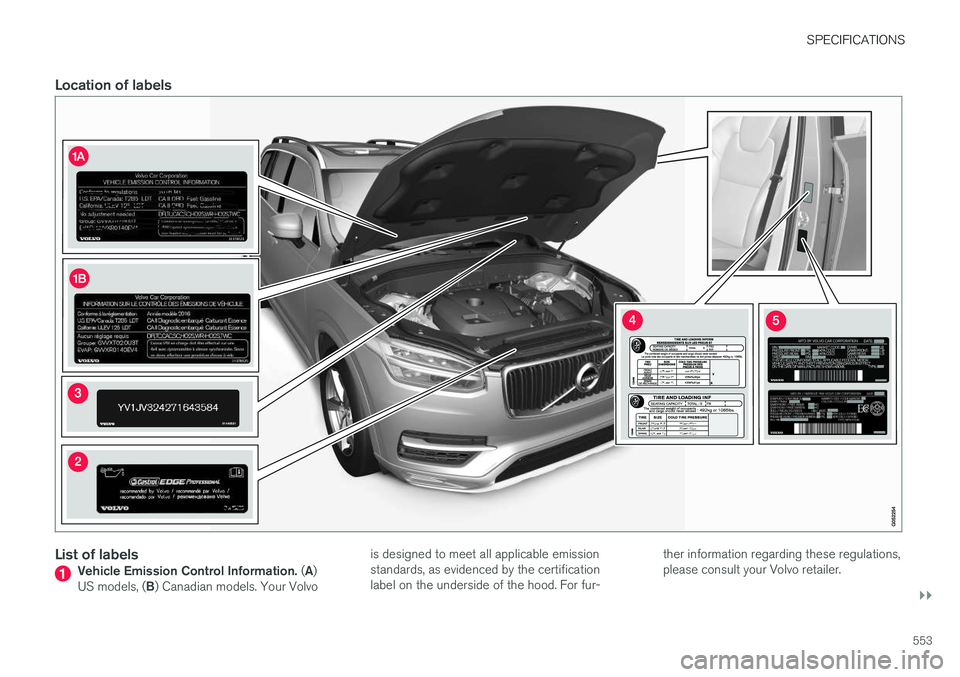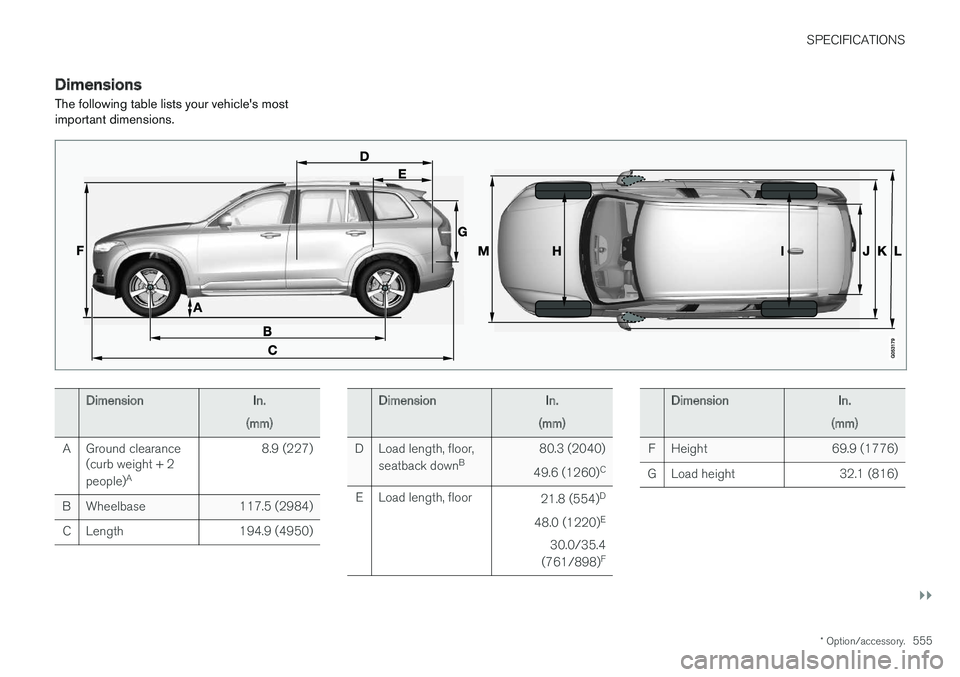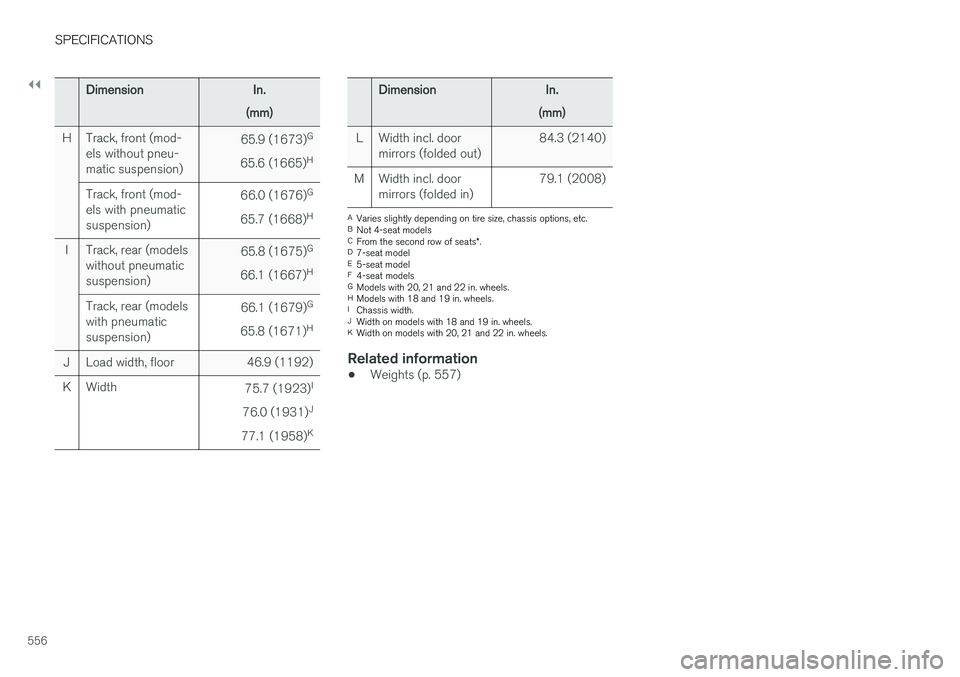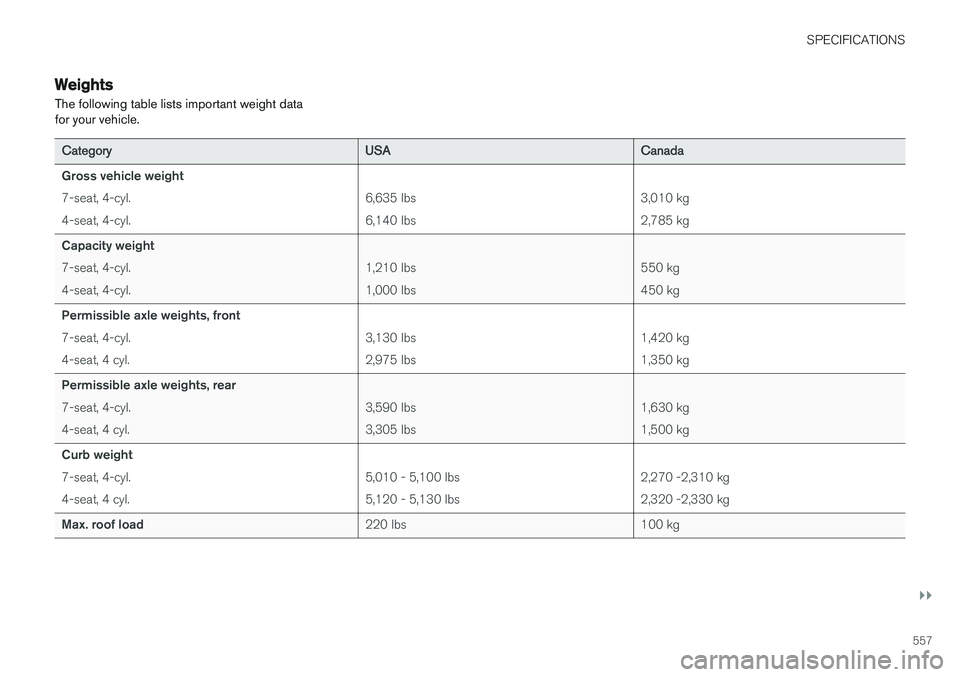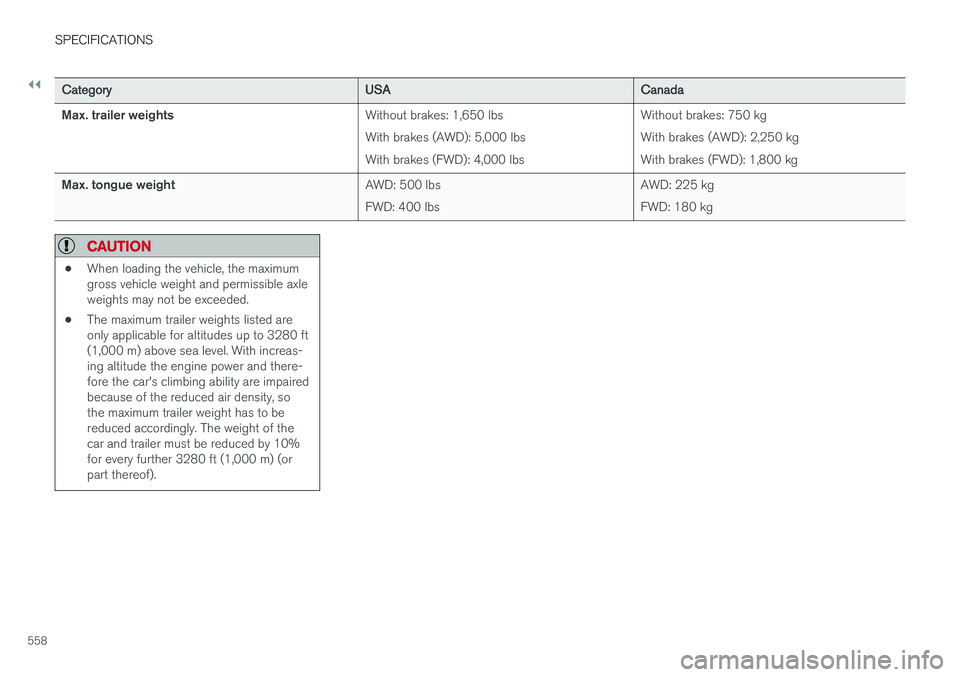VOLVO XC90 T8 2017 OwnerôÇs Manual
XC90 T8 2017
VOLVO
VOLVO
https://www.carmanualsonline.info/img/45/36380/w960_36380-0.png
VOLVO XC90 T8 2017 OwnerôÇs Manual
Trending: diagnostic menu, battery capacity, airbag, ECU, climate settings, jump cable, octane
Page 551 of 580
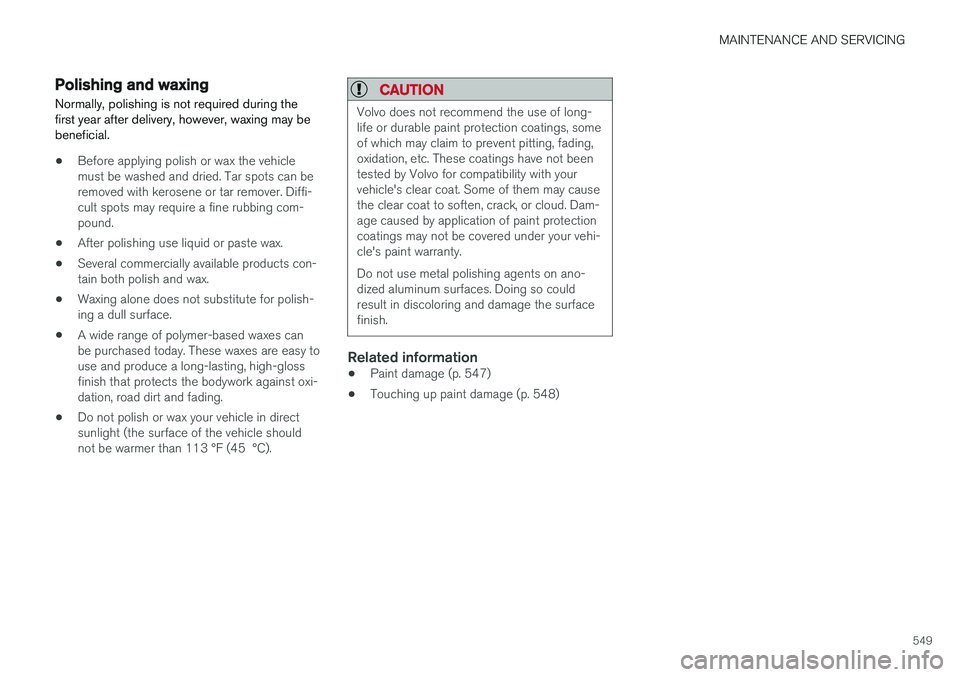
MAINTENANCE AND SERVICING
549
Polishing and waxingNormally, polishing is not required during the first year after delivery, however, waxing may bebeneficial.
ã Before applying polish or wax the vehicle must be washed and dried. Tar spots can beremoved with kerosene or tar remover. Diffi-cult spots may require a fine rubbing com-pound.
ã After polishing use liquid or paste wax.
ã Several commercially available products con-tain both polish and wax.
ã Waxing alone does not substitute for polish-ing a dull surface.
ã A wide range of polymer-based waxes canbe purchased today. These waxes are easy touse and produce a long-lasting, high-glossfinish that protects the bodywork against oxi-dation, road dirt and fading.
ã Do not polish or wax your vehicle in directsunlight (the surface of the vehicle shouldnot be warmer than 113 ô¯F (45 ô¯C).
CAUTION
Volvo does not recommend the use of long- life or durable paint protection coatings, someof which may claim to prevent pitting, fading,oxidation, etc. These coatings have not beentested by Volvo for compatibility with yourvehicle's clear coat. Some of them may causethe clear coat to soften, crack, or cloud. Dam-age caused by application of paint protectioncoatings may not be covered under your vehi-cle's paint warranty. Do not use metal polishing agents on ano- dized aluminum surfaces. Doing so couldresult in discoloring and damage the surfacefinish.
Related information
ãÂ
Paint damage (p. 547)
ã Touching up paint damage (p. 548)
Page 552 of 580
Page 553 of 580
S P E C I F I C A T I O N S
Page 554 of 580
SPECIFICATIONS
552
Label information
The labels in your vehicle provide information such as the chassis number, paint code, tireinflation pressure, etc.
Page 555 of 580
SPECIFICATIONS
}}
553
Location of labels
List of labelsVehicle Emission Control Information. (A )
US models, ( B) Canadian models. Your Volvo is designed to meet all applicable emission standards, as evidenced by the certificationlabel on the underside of the hood. For fur-
ther information regarding these regulations,please consult your Volvo retailer.
Page 556 of 580
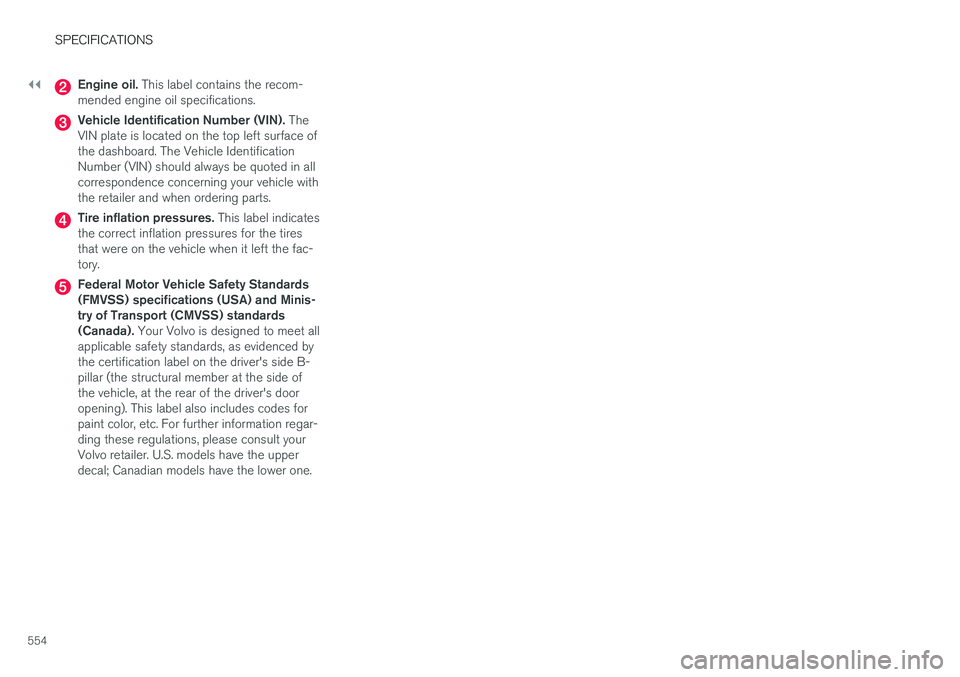
||
SPECIFICATIONS
554
Engine oil. This label contains the recom-
mended engine oil specifications.
Vehicle Identification Number (VIN). The
VIN plate is located on the top left surface of the dashboard. The Vehicle IdentificationNumber (VIN) should always be quoted in allcorrespondence concerning your vehicle withthe retailer and when ordering parts.
Tire inflation pressures. This label indicates
the correct inflation pressures for the tires that were on the vehicle when it left the fac-tory.
Federal Motor Vehicle Safety Standards (FMVSS) specifications (USA) and Minis-try of Transport (CMVSS) standards(Canada). Your Volvo is designed to meet all
applicable safety standards, as evidenced bythe certification label on the driver's side B-pillar (the structural member at the side ofthe vehicle, at the rear of the driver's dooropening). This label also includes codes forpaint color, etc. For further information regar-ding these regulations, please consult yourVolvo retailer. U.S. models have the upperdecal; Canadian models have the lower one.
Page 557 of 580
SPECIFICATIONS
}}
* Option/accessory.555
Dimensions
The following table lists your vehicle's most important dimensions.
Dimension In.
(mm)
A Ground clearance (curb weight + 2 people) A 8.9 (227)
B Wheelbase 117.5 (2984) C Length 194.9 (4950)Dimension In.
(mm)
D Load length, floor, seatback down B 80.3 (2040)
49.6 (1260) C
E Load length, floor 21.8 (554)D
48.0 (1220) E
30.0/35.4
(761/898) FDimension
In.
(mm)
F Height 69.9 (1776)
G Load height 32.1 (816)
Page 558 of 580
||
SPECIFICATIONS
556
DimensionIn.
(mm)
H Track, front (mod- els without pneu- matic suspension) 65.9 (1673)
G
65.6 (1665) H
Track, front (mod-els with pneumaticsuspension) 66.0 (1676)
G
65.7 (1668) H
I Track, rear (models without pneumaticsuspension) 65.8 (1675)
G
66.1 (1667) H
Track, rear (modelswith pneumaticsuspension) 66.1 (1679)
G
65.8 (1671) H
J Load width, floor 46.9 (1192)
K Width 75.7 (1923)I
76.0 (1931) J
77.1 (1958) KDimension
In.
(mm)
L Width incl. door mirrors (folded out) 84.3 (2140)
M Width incl. door mirrors (folded in) 79.1 (2008)
A
Varies slightly depending on tire size, chassis options, etc.
B Not 4-seat models
C From the second row of seats *.
D 7-seat model
E 5-seat model
F 4-seat models
G Models with 20, 21 and 22 in. wheels.
H Models with 18 and 19 in. wheels.
I Chassis width.
J Width on models with 18 and 19 in. wheels.
K Width on models with 20, 21 and 22 in. wheels.
Related information
ã Weights (p. 557)
Page 559 of 580
SPECIFICATIONS
}}
557
Weights The following table lists important weight data for your vehicle.
CategoryUSACanada
Gross vehicle weight 7-seat, 4-cyl. 4-seat, 4-cyl. 6,635 lbs6,140 lbs3,010 kg2,785 kg
Capacity weight 7-seat, 4-cyl. 4-seat, 4-cyl. 1,210 lbs1,000 lbs550 kg450 kg
Permissible axle weights, front 7-seat, 4-cyl. 4-seat, 4 cyl. 3,130 lbs2,975 lbs1,420 kg1,350 kg
Permissible axle weights, rear 7-seat, 4-cyl. 4-seat, 4 cyl. 3,590 lbs3,305 lbs1,630 kg1,500 kg
Curb weight 7-seat, 4-cyl. 4-seat, 4 cyl. 5,010 - 5,100 lbs5,120 - 5,130 lbs2,270 -2,310 kg2,320 -2,330 kg
Max. roof load 220 lbs
100 kg
Page 560 of 580
||
SPECIFICATIONS
558
CategoryUSACanada
Max. trailer weights Without brakes: 1,650 lbs With brakes (AWD): 5,000 lbsWith brakes (FWD): 4,000 lbsWithout brakes: 750 kgWith brakes (AWD): 2,250 kgWith brakes (FWD): 1,800 kg
Max. tongue weight AWD: 500 lbsFWD: 400 lbsAWD: 225 kgFWD: 180 kg
CAUTION
ãÂ
When loading the vehicle, the maximum gross vehicle weight and permissible axleweights may not be exceeded.
ã The maximum trailer weights listed areonly applicable for altitudes up to 3280 ft(1,000 m) above sea level. With increas-ing altitude the engine power and there-fore the car's climbing ability are impairedbecause of the reduced air density, sothe maximum trailer weight has to bereduced accordingly. The weight of thecar and trailer must be reduced by 10%for every further 3280 ft (1,000 m) (orpart thereof).
Trending: warning lights, warning light, inflation pressure, airbag, load capacity, coolant capacity, start stop button


